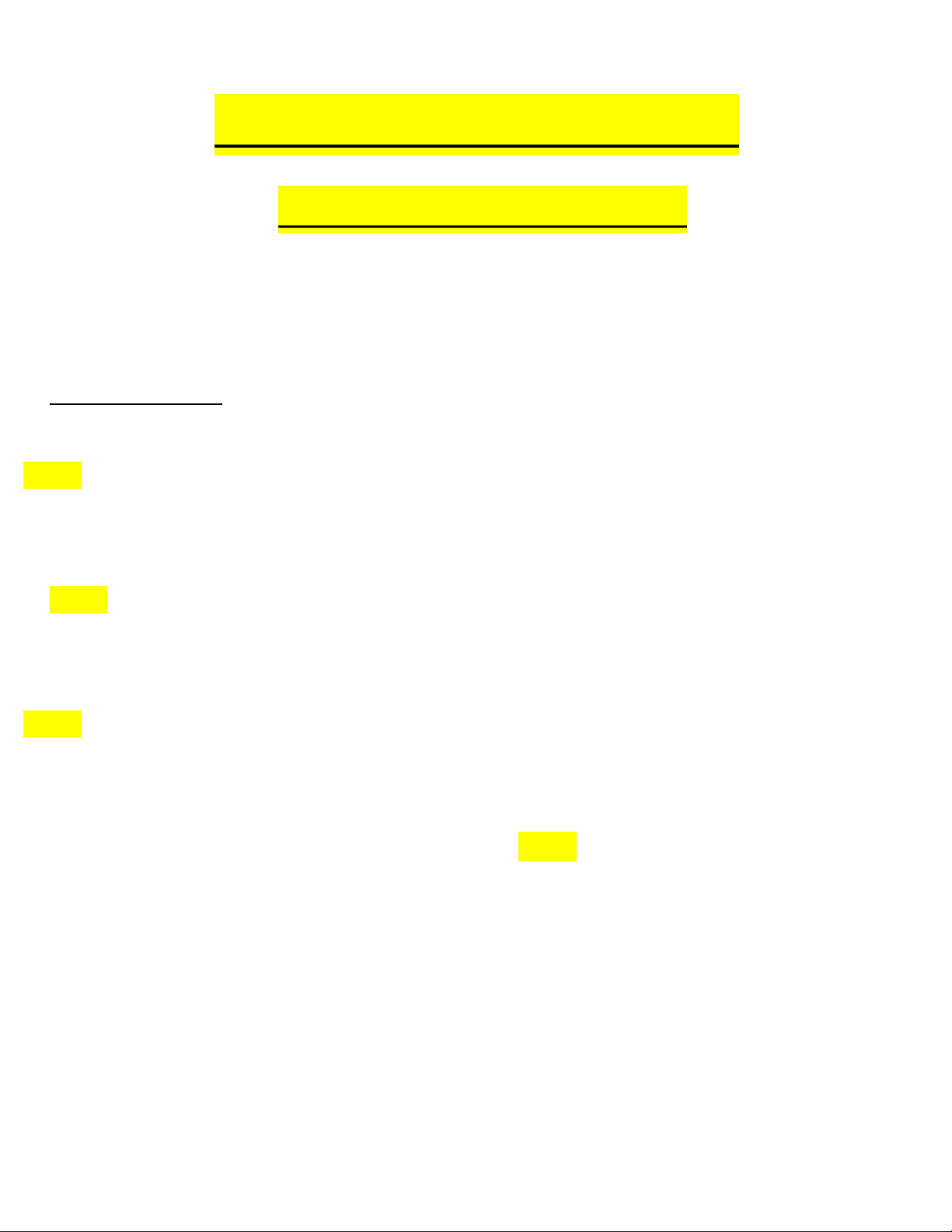
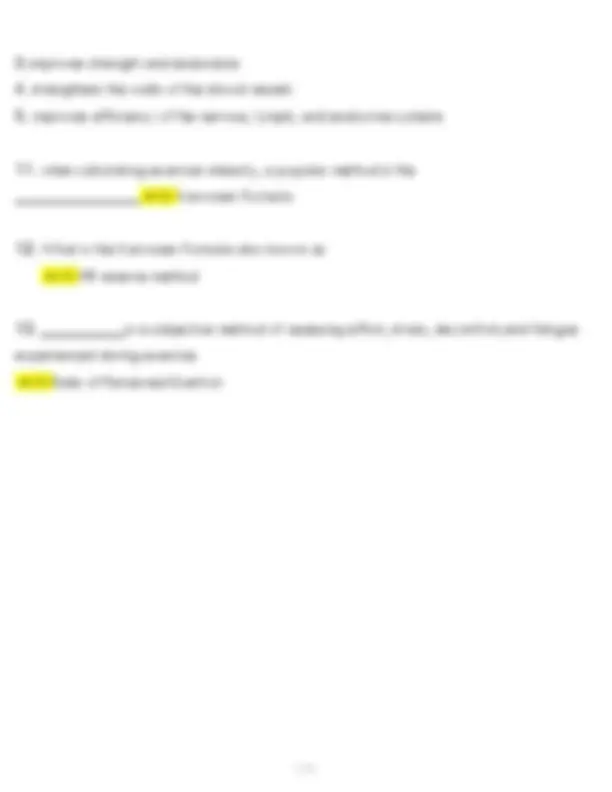
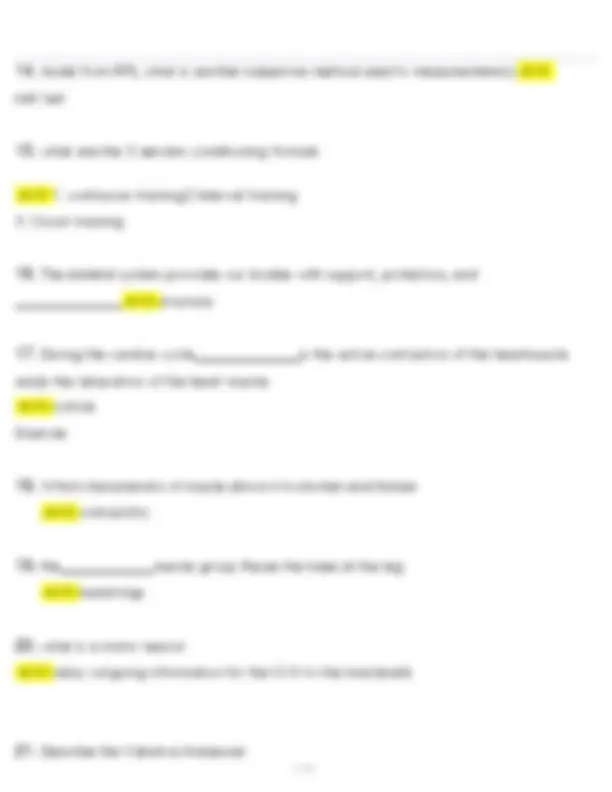
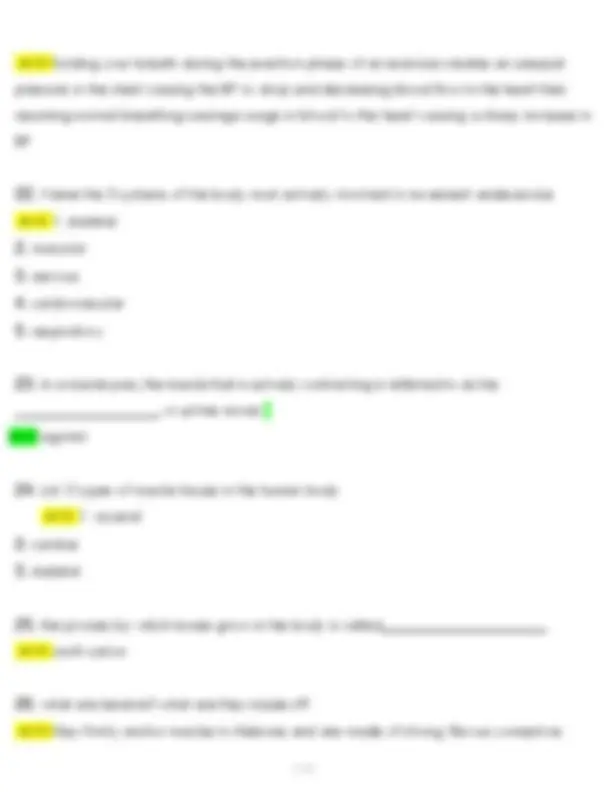
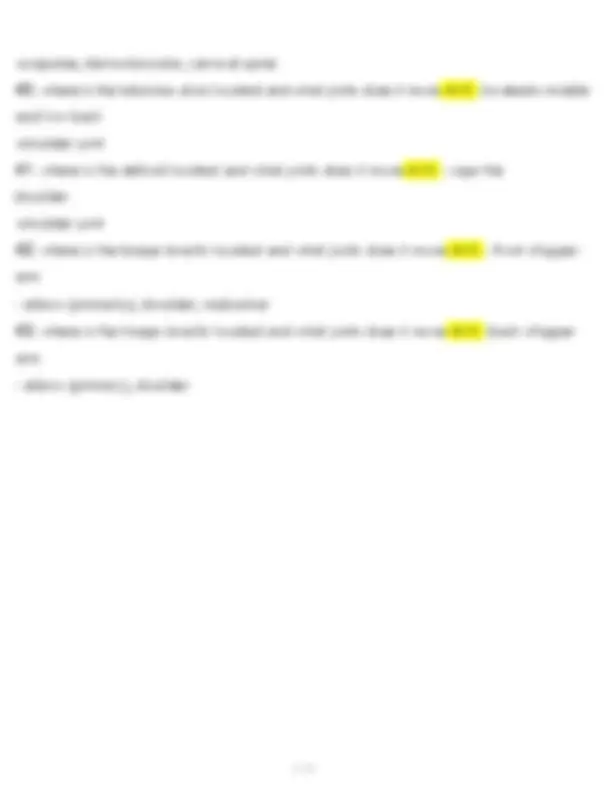
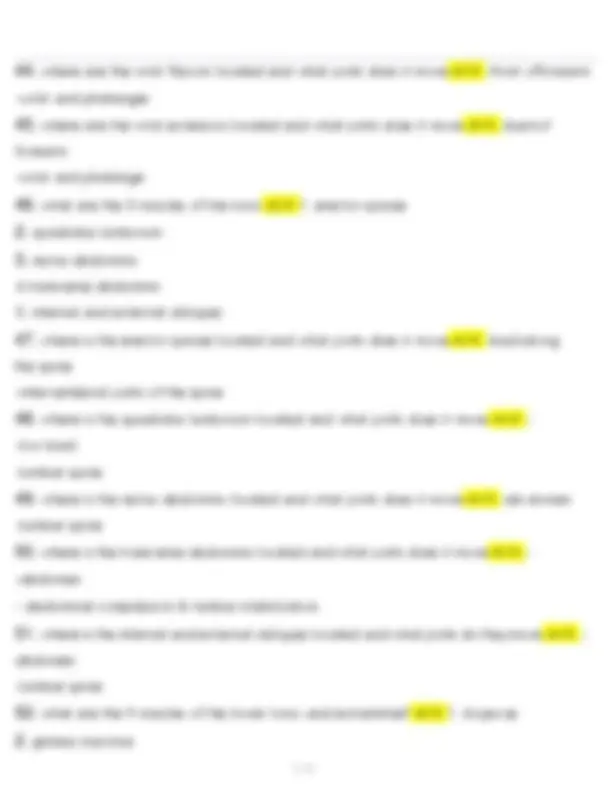
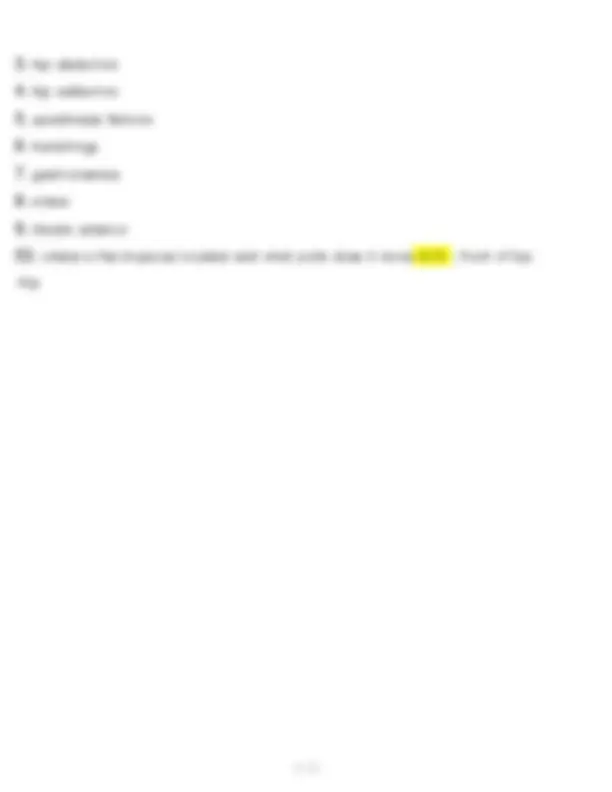
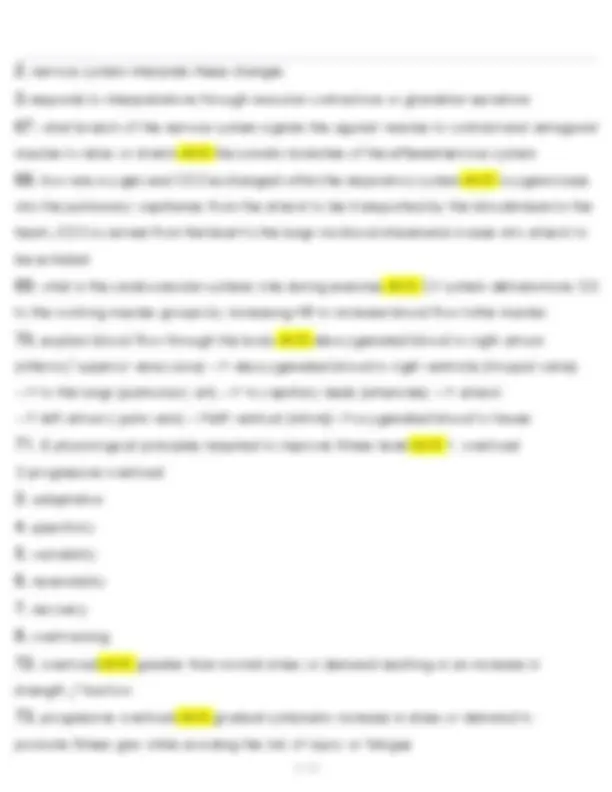
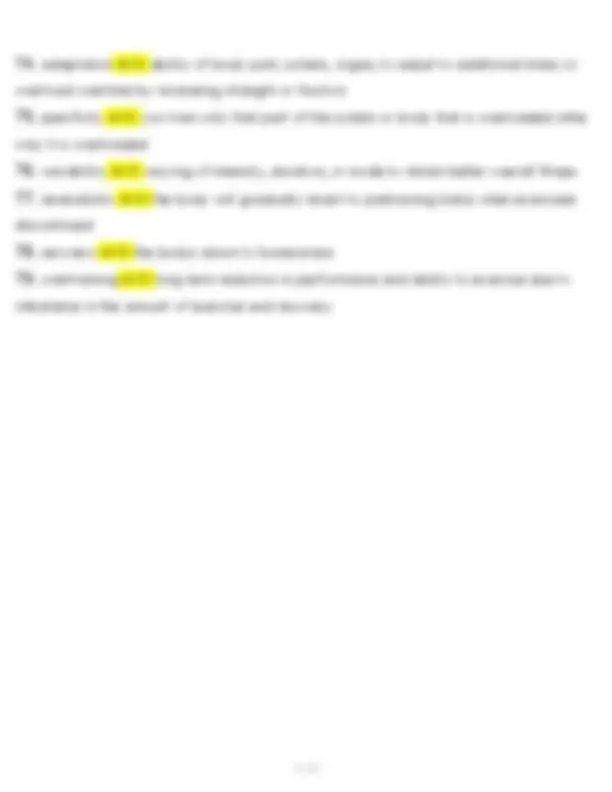
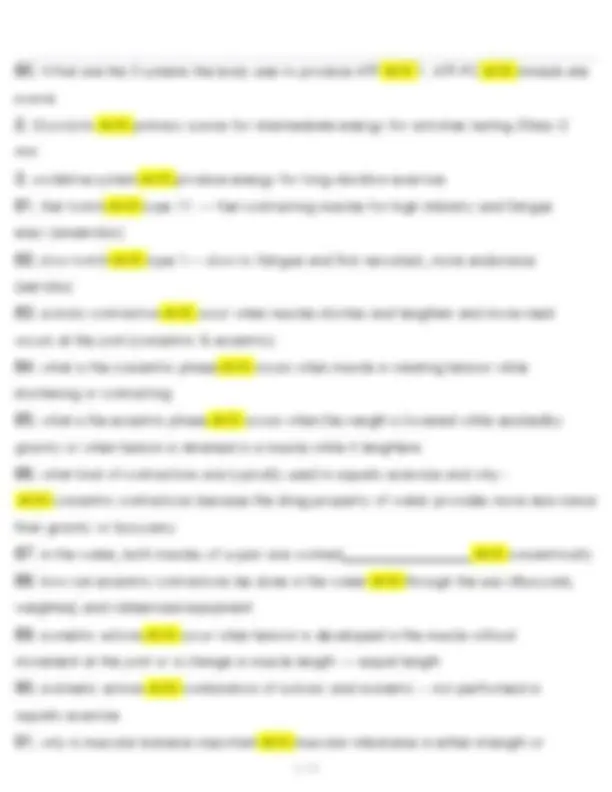
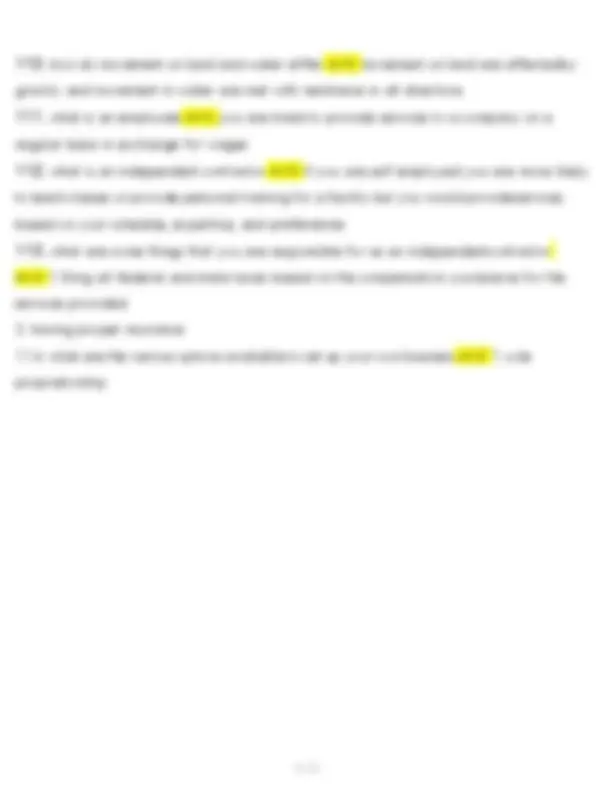
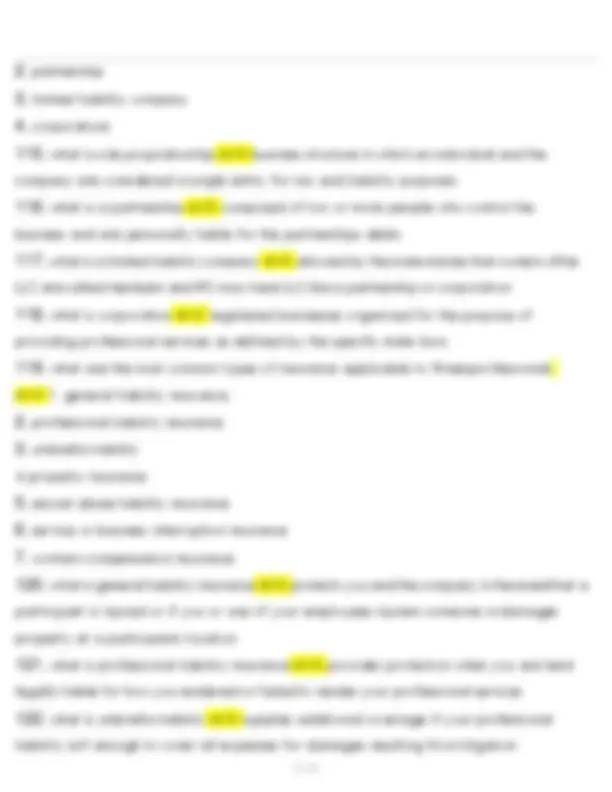
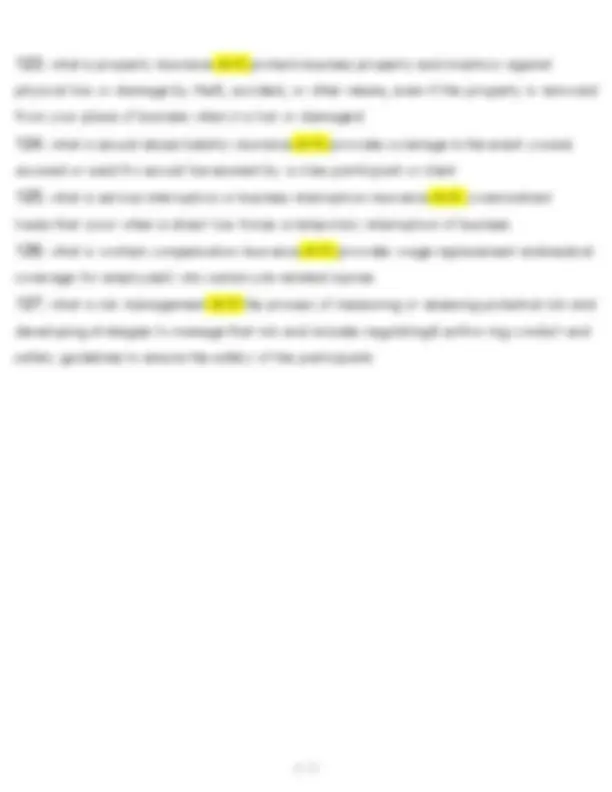
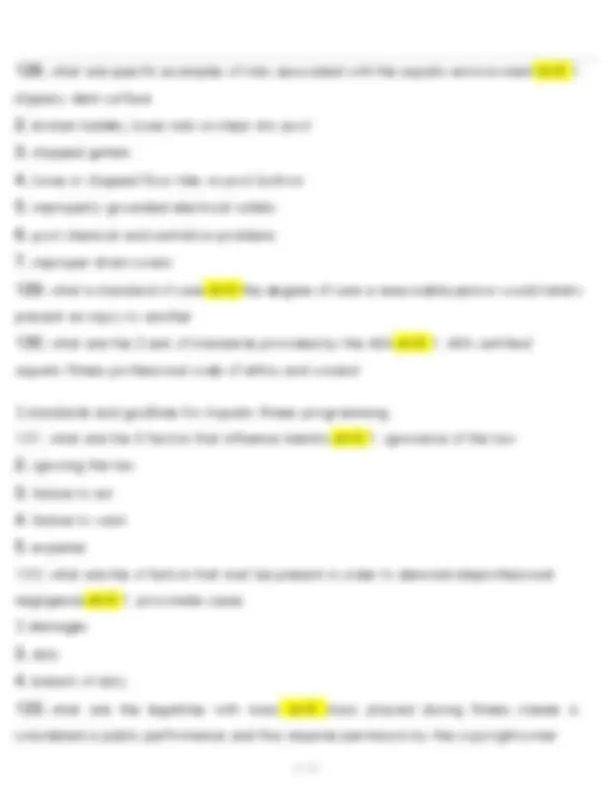
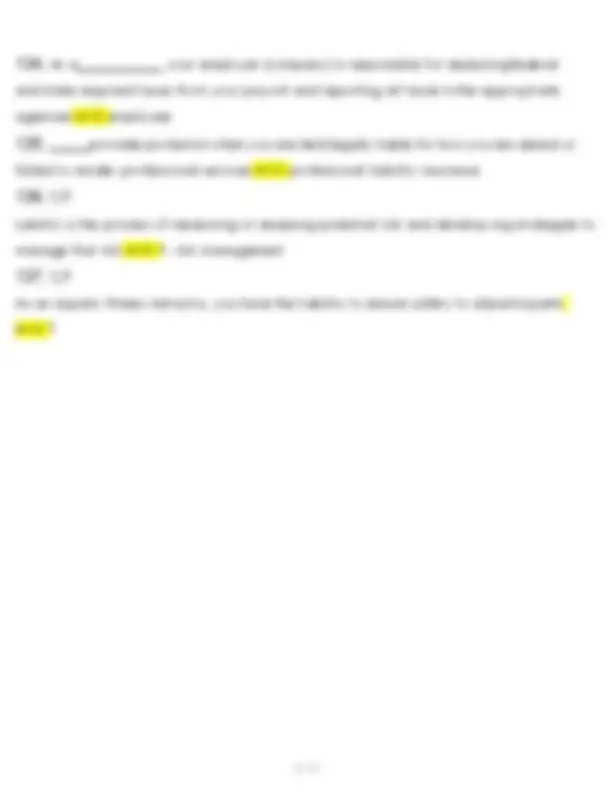
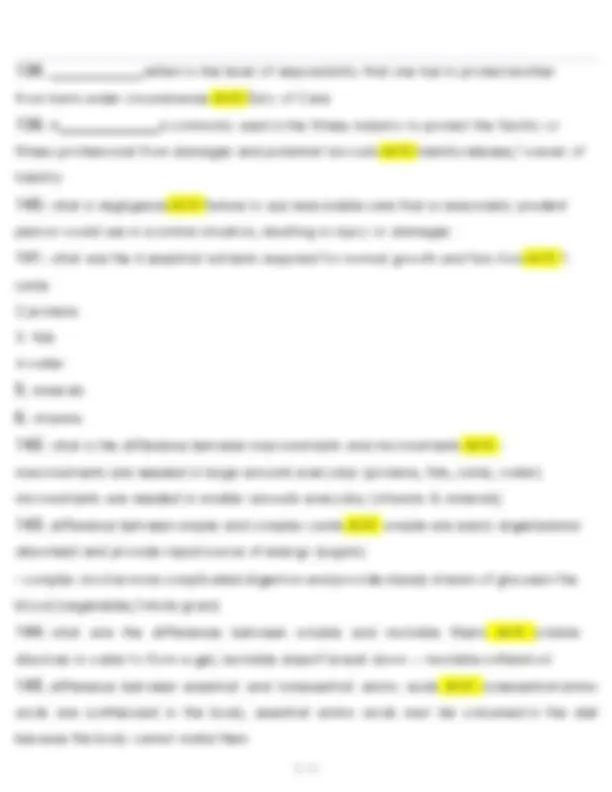
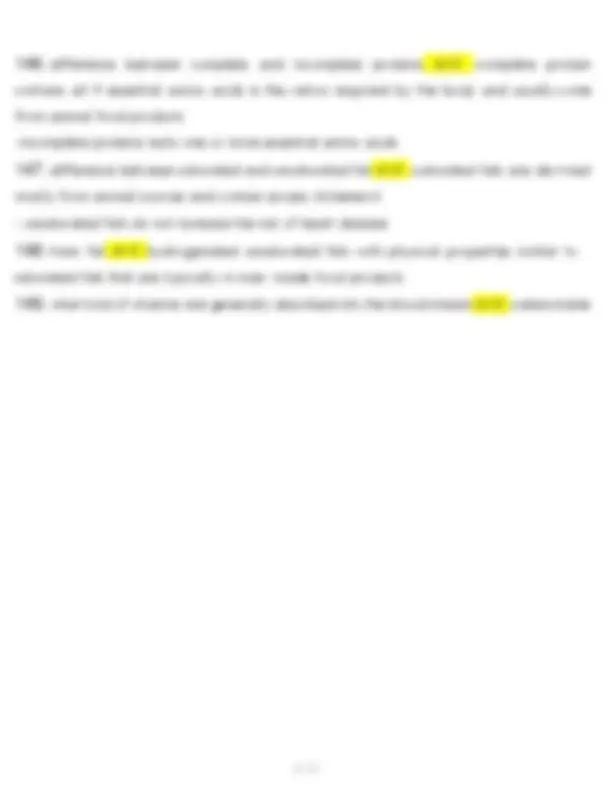
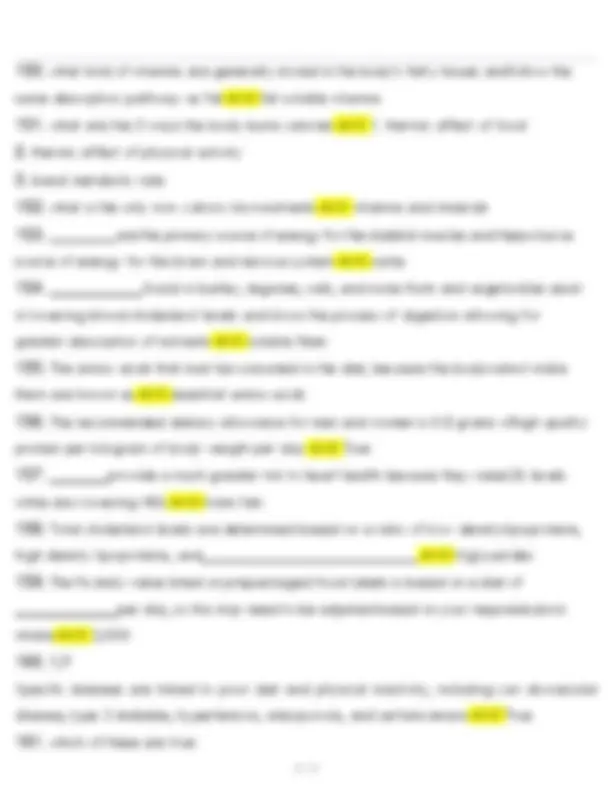
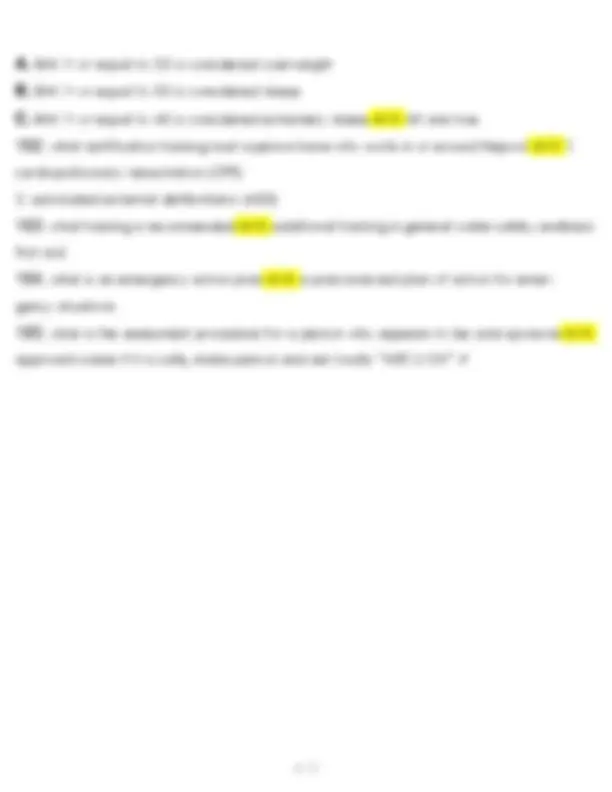
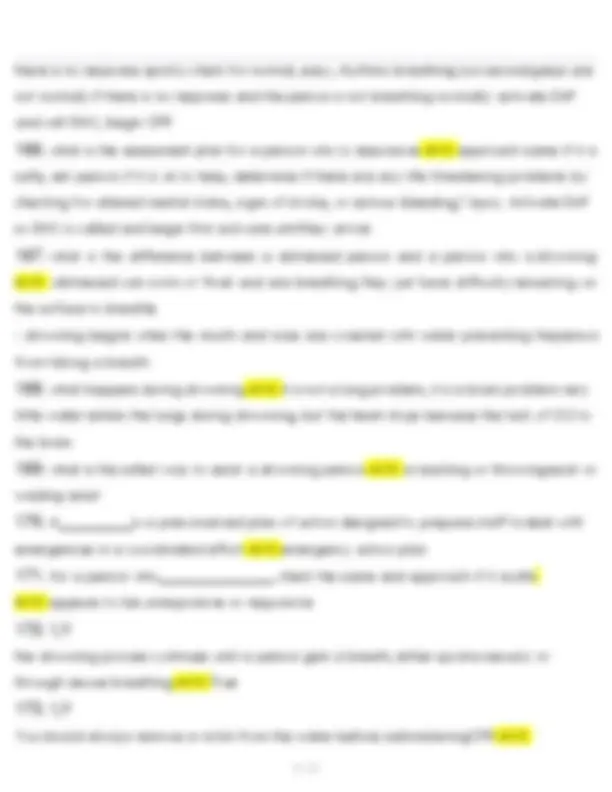
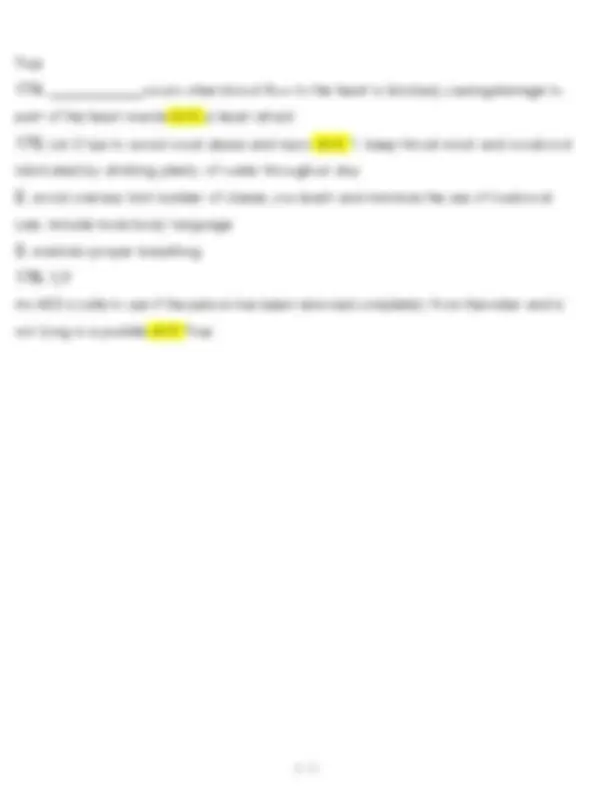
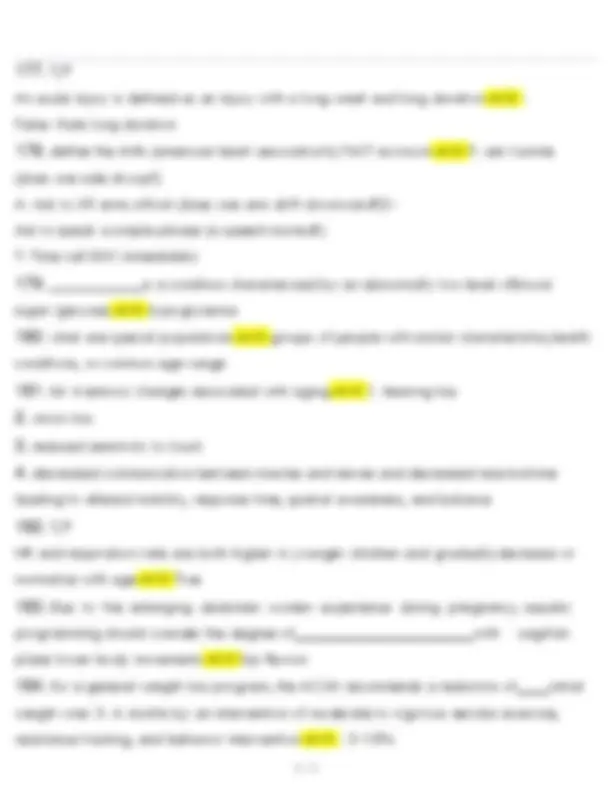
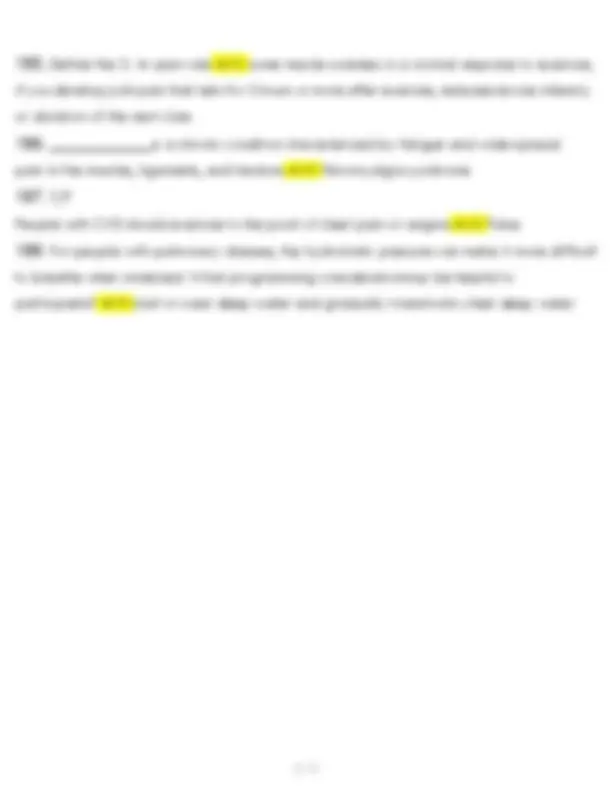
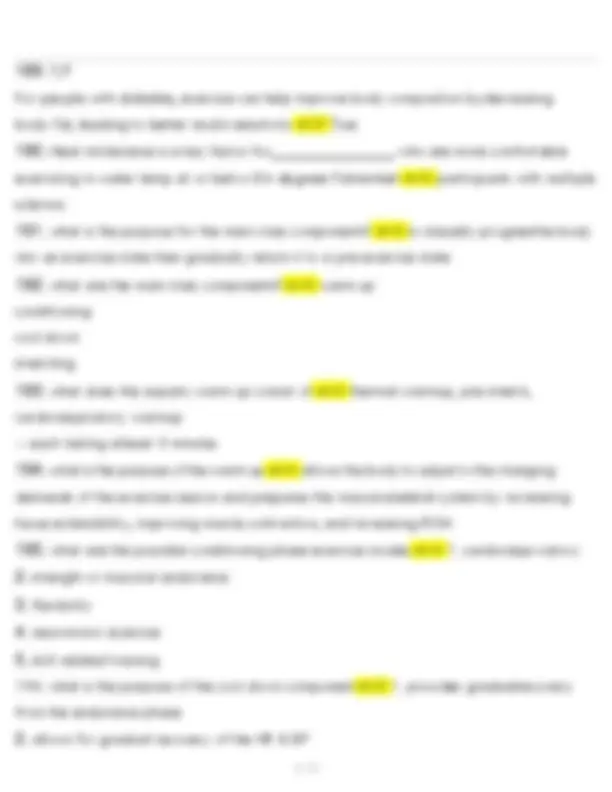
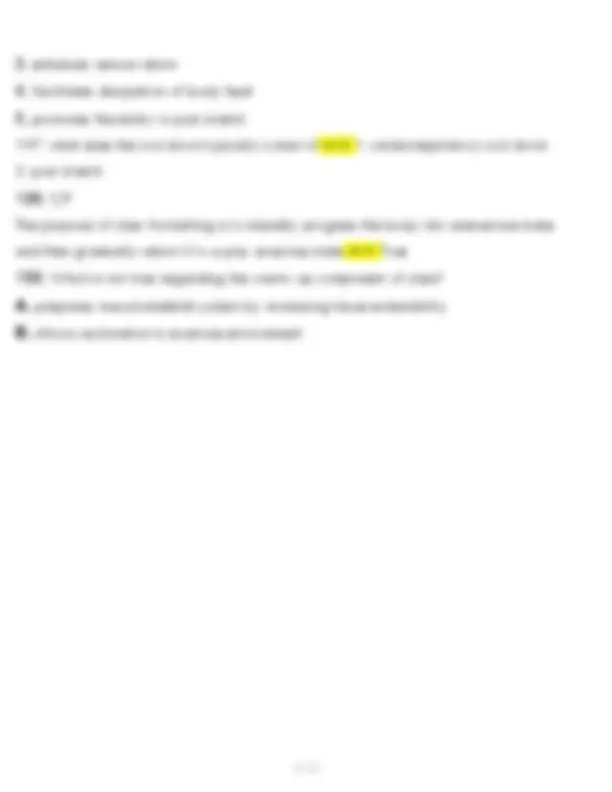
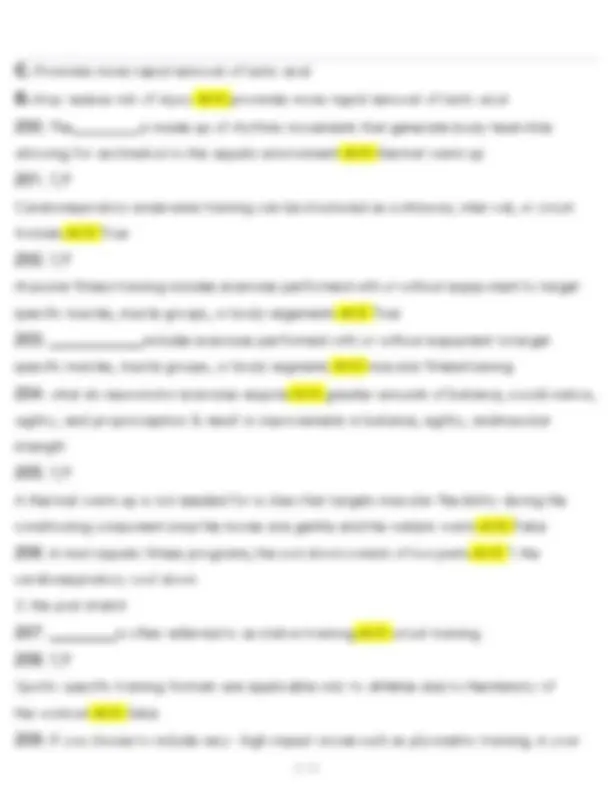
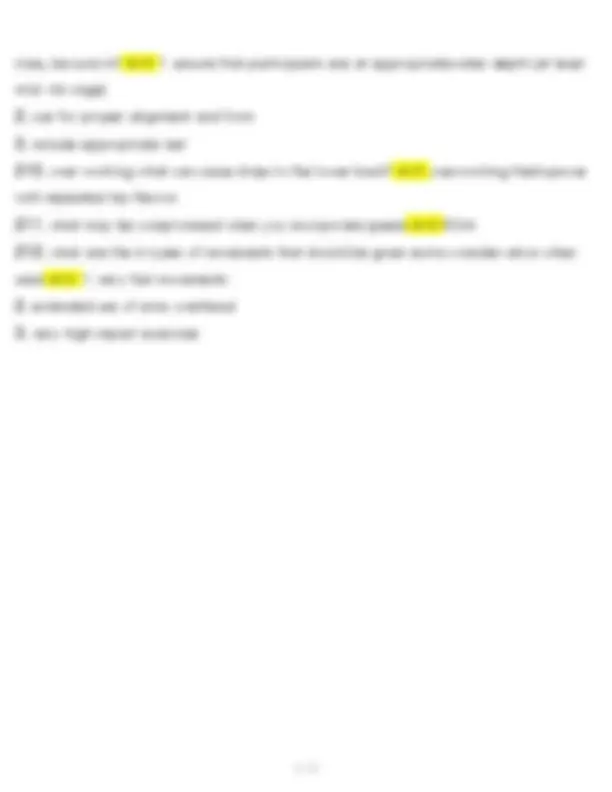
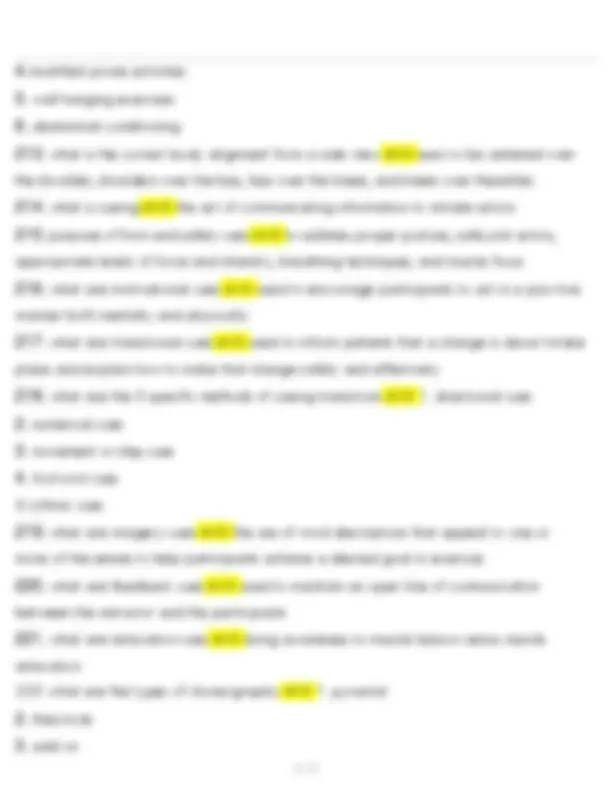
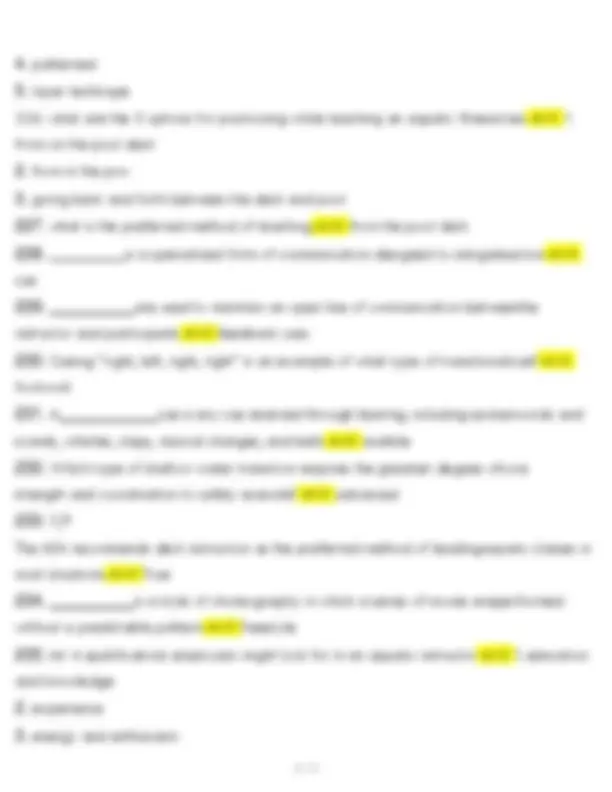
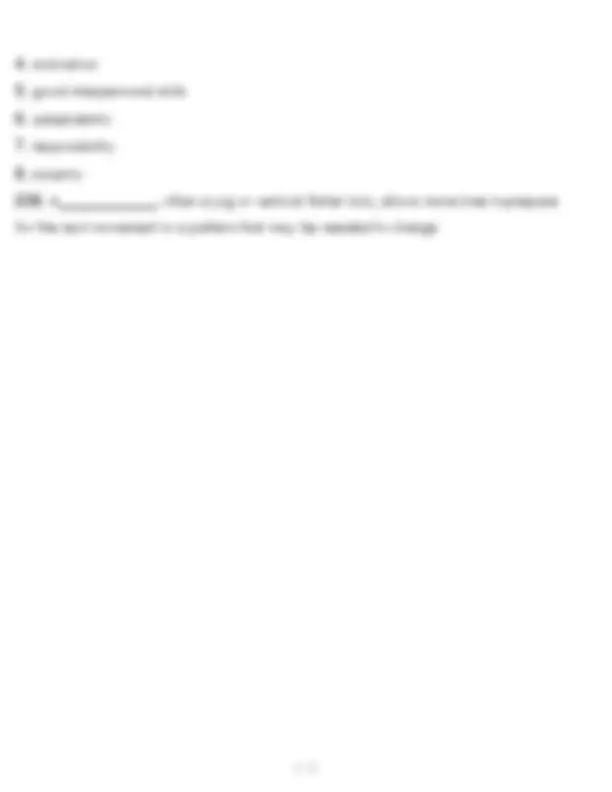
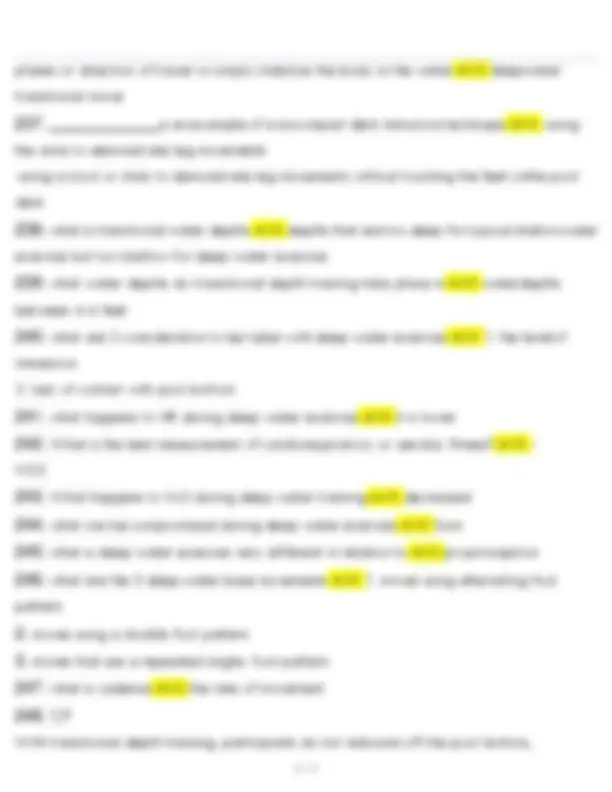
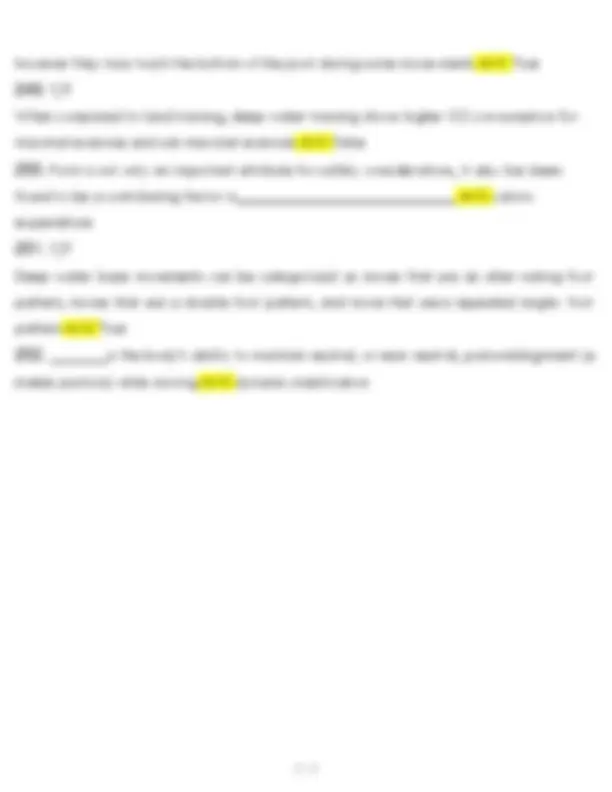
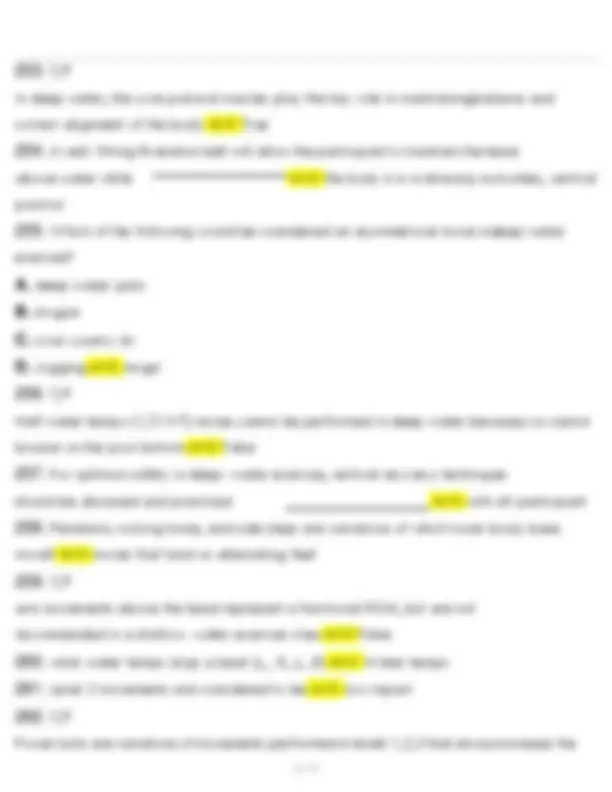
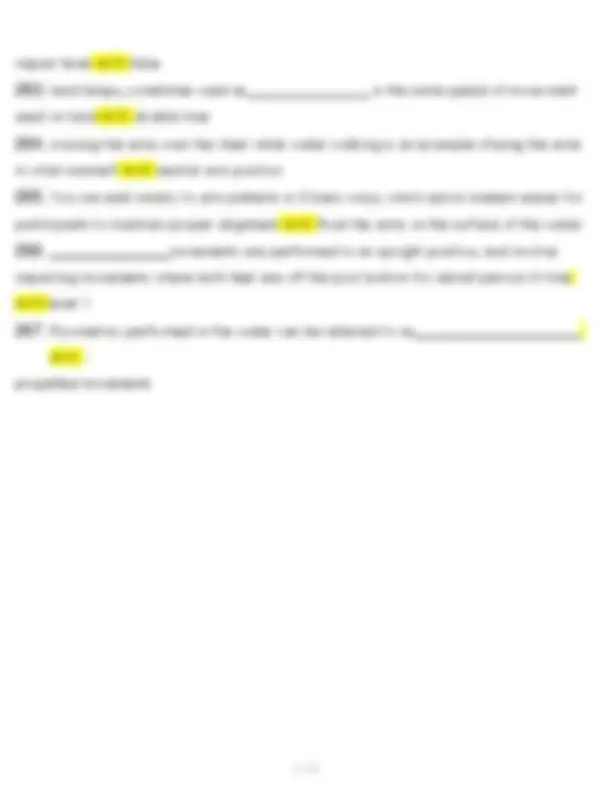
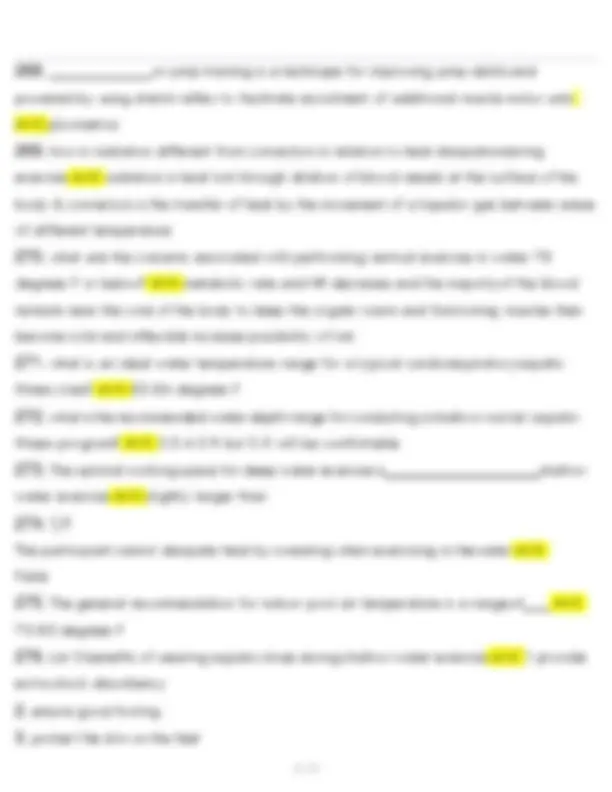
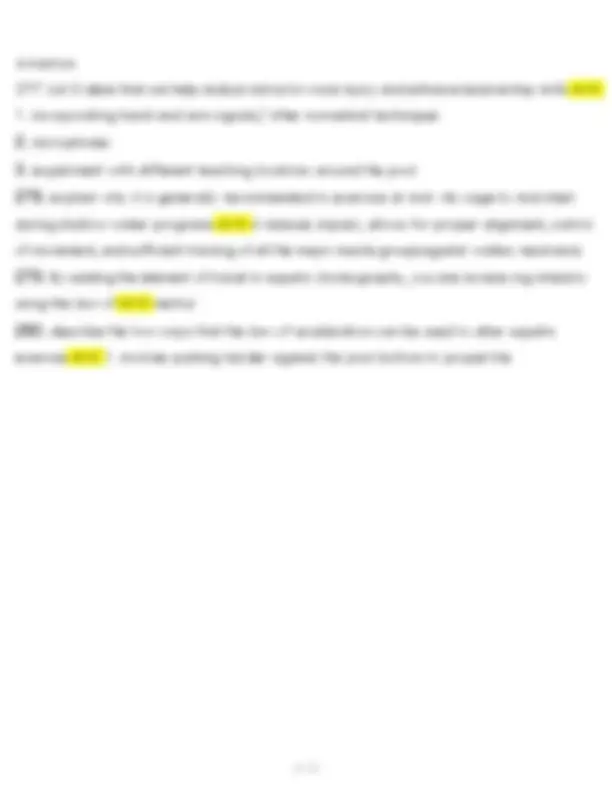
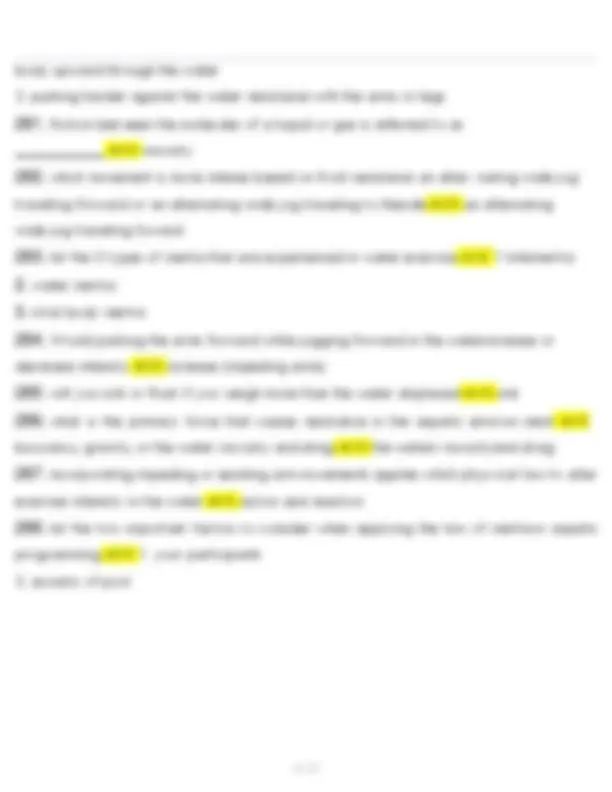


Study with the several resources on Docsity

Earn points by helping other students or get them with a premium plan


Prepare for your exams
Study with the several resources on Docsity

Earn points to download
Earn points by helping other students or get them with a premium plan
Community
Ask the community for help and clear up your study doubts
Discover the best universities in your country according to Docsity users
Free resources
Download our free guides on studying techniques, anxiety management strategies, and thesis advice from Docsity tutors
AEA Exam Study Guide Questions and Answers 1. is defines as the maximum force that can be exerted by amuscle or muscle group against a resistance ANS muscular strength 2. what type of stretching activates the muscle spindles? ANS Ballistic Stretching 3. What are muscle spindles? ANS specialized receptors in the muscle that monitormuscle length change and the speed of muscle length change 4. name the six skill- related components of fitness ANS 1. agility 2.balance 3.coordination 4. power 5. reaction time 6. speed 5. What is the difference between max HR and HR reserve 2 / 22 ANS max HR is the hightHR a person can achieve, it is measured with a max HR test or estimated with 220-age HR reserve is your maximal HR minus your resting HR 6. How does compression lower you HR in the water? ANS it acts like a compressoron the body systems, causing a smaller venous load to the heart than in land exercise.. the heart has to work less to return blood from the limbs back to your heart
Typology: Exams
1 / 44

This page cannot be seen from the preview
Don't miss anything!





































ANS max HR is the hightHR a person can achieve, it is measured with a max HR test or estimated with 220 - age HR reserve is your maximal HR minus your resting HR
ANS holding your breath during the exertion phase of an exercise creates an unequal pressure in the chest causing the BP to drop and decreasing blood flow to the heart then resuming normal breathing causinga surge in blood to the heart causing a sharp increase in BP
flexibility, or both can affect the integrity of the involved joint and increase risk of injury